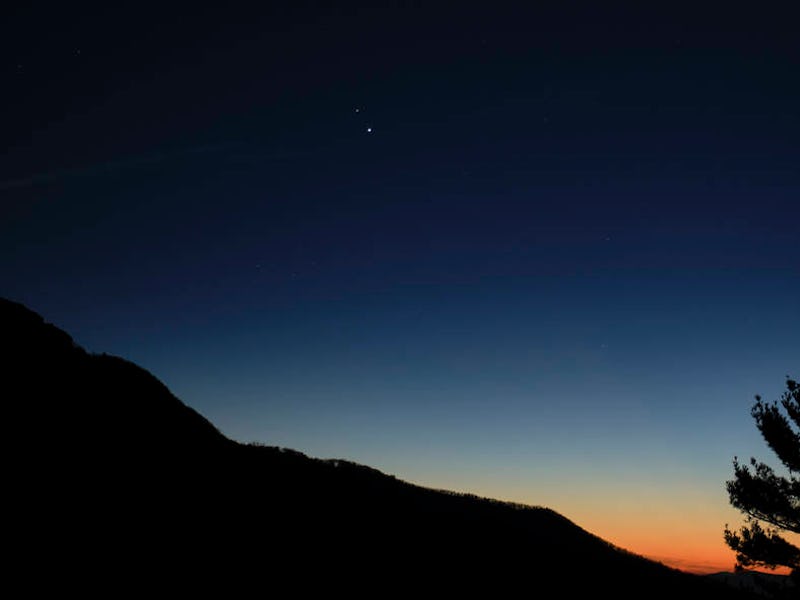Star of Bethlehem: You need to see this once-in-a-millennium event next week
The planets are literally aligning for this one.

CELESTIAL OBJECTS COME AND GO FROM OUR VIEW IN THE NIGHT SKY. Whether it be the Full Moon, a meteor shower, or just the best night to see Mars, we're here to direct your eyes skyward and tell you to look up and appreciate the wonders of space from Earth.
This week, you can't miss a rare celestial encounter between Jupiter and Saturn, one that has not occurred in nearly 400 years, when the pair will appear to shine as one, bright star in the night sky on Monday.
Jupiter and Saturn's respective orbits will align on Monday, bringing the two planets the closest they have been in nearly 400 years. This rare alignment hasn't occurred over night in more than 800 years.
Already, this is not just any night. The planets' alignment will take place on the night of winter solstice, the longest night of the year.
What is a planetary conjunction?
It takes Jupiter 12 years to orbit the Sun. Saturn takes a slower, more distant route that takes the planet 29 years to complete.
In this rare alignment of their orbits, Jupiter essentially laps Saturn, speeding up past the gas giant in their respective trips around the Sun.
“You can imagine the solar system to be a racetrack, with each of the planets as a runner in their own lane and the Earth toward the center of the stadium,” Henry Throop, astronomer in the Planetary Science Division at NASA Headquarters in Washington, said in a statement. “From our vantage point, we’ll be able to be to see Jupiter on the inside lane, approaching Saturn all month and finally overtaking it on December 21.”
This sky chart shows how best to spot the conjunction.
The planets' conjunction takes place every 20 years. But because of where we are in our orbit, this is the closest they will appear to us from Earth since 1623. The last time the conjunction appeared so close to Earth in the night sky was 1226.
When it happens, the two planets will look as though they are incredibly close to one another, appearing as one single bright spot in the sky. But the actual physical distance between the two planets will not have changed.
Rather, it's an optical illusion. The planets are not on a perfect orbital plane, and their respective orbits around the Sun are slightly inclined to one another.
Diana Hannikainen, observing editor at Sky & Telescope, compares their orbital paths to a wobbling spinning top.
"When they say this is the closest that it's been, that has to do with the fact that the orbital planes of the planets aren’t perfectly aligned," Hannikainen tells Inverse. "They’re not exactly like a frisbee, the orbits are not perfectly in a plane, so they are a little bit inclined."
"It’s an unmistakable sight."
When the conditions are just right, as they are this year, the planets appear at their chummiest in several hundred years. But in reality, they are still millions of miles apart.
To view this spectacular display in the sky, look towards the southwest shortly after sunset. You must also have a clear view of the sky as the two planets are setting, so it is best to get as high up as you can. Even tree tops might interfere with your view, according to Hannikainen.
Jupiter will appear as a bright star and be easily visible, while Saturn will be a little less bright, visible slightly above and to the left of Jupiter.
"It’s an unmistakable sight as soon as you look towards the southwest," Hannikainen says. "They’re one very bright light and one quite bright light very close to each other."
You can stare at this rare celestial event with the naked eye, but a telescope may enable you to see Jupiter's larger moons.
The next time these two planets will appear this close in the night sky will be on March 15, 2080 so be sure to look up on Monday night if you don't want to miss it.